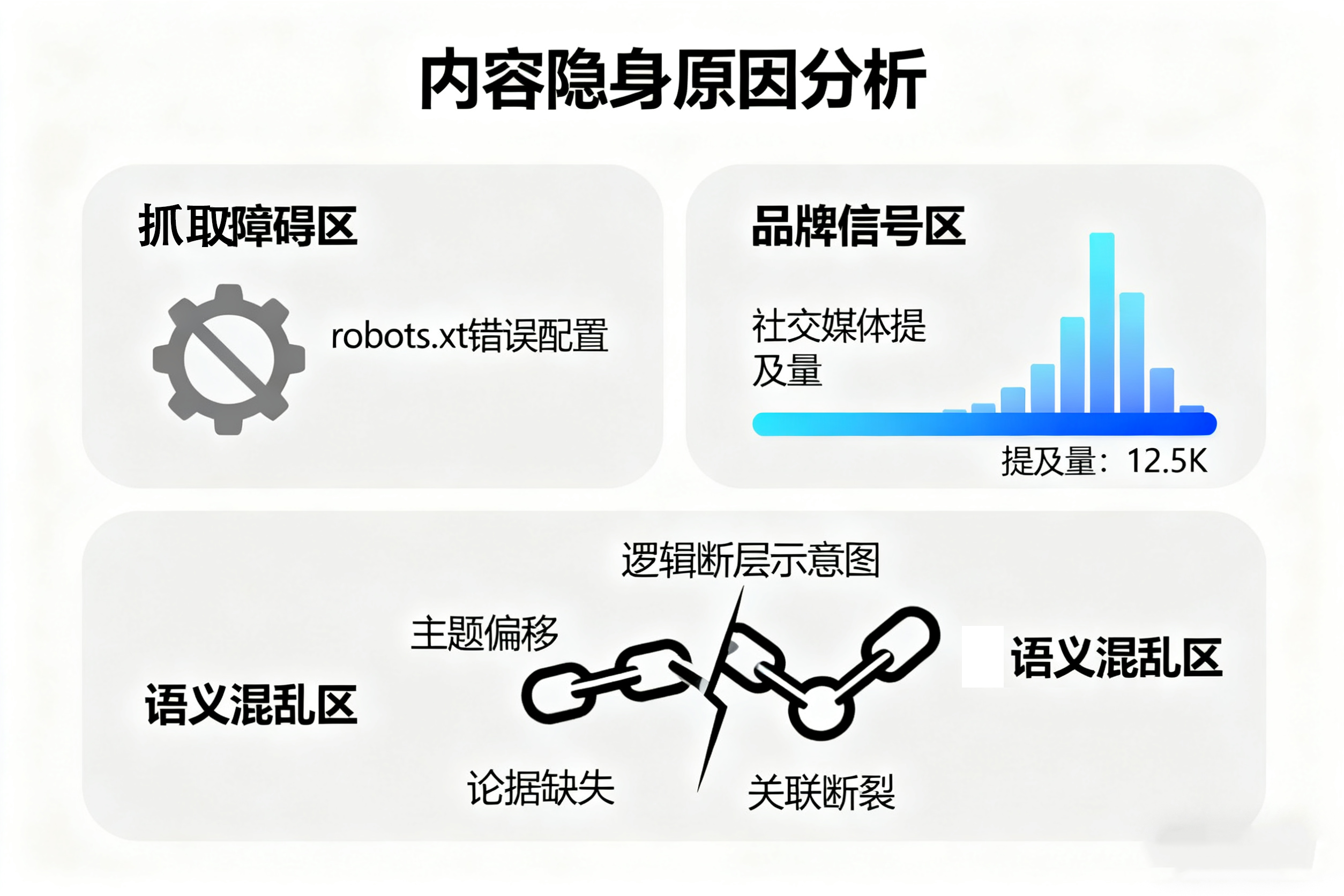Introduction
In the wave of generative AI marketing, brands' content creation speed is faster than ever. With AI marketing platforms and tools, companies can generate ad copy in minutes and complete multilingual translations in hours. However, many companies discover that despite producing large amounts of content, it remains "invisible" in AI search results—failing to appear in AI recommendations or be mentioned by AI assistants in response to user queries.
This "content invisibility" problem has become a new challenge for brands in AI marketing. Why does content fail to gain exposure in AI platforms? How can brands break through invisibility barriers? This article reveals a three-step solution.
Step 1: Content Structure Optimization
AI platforms have high requirements for content structure. Well-structured content is easier for AI to understand and index:
Clear Heading Hierarchy: Use standardized heading hierarchies (H1, H2, H3) to help AI understand content framework. Main title uses H1, main sections use H2, subsections use H3.
Paragraph Segmentation: Avoid long paragraphs; keep each paragraph focused on one topic, typically 3-5 sentences.
Logical Flow: Ensure content has clear logical progression—introduction, body, conclusion—with smooth transitions between sections.
Key Information Highlighting: Use bold, italic, or list formats to highlight key information, making it easier for AI to identify core content.
Step 2: Semantic Enhancement and Context Building
Beyond structure, content needs sufficient semantic information and context for AI to understand:
Complete Context: Provide sufficient background information and context rather than assuming AI already knows the background.
Keyword Density: Naturally integrate relevant keywords without over-optimization. Keyword density should typically be 2-3%.
Semantic Relationships: Use related terms, synonyms, and contextually related vocabulary to help AI understand content themes.
Data and Examples: Provide specific data, cases, or examples to enhance content authority and practicality.
Step 3: Multi-Platform Deployment Strategy
Relying on a single platform is insufficient; brands need multi-platform deployment strategies:
Official Website Optimization: Ensure official website content is well-structured and optimized for AI crawling and indexing.
Content Platform Distribution: Publish content on authoritative content platforms like Medium, LinkedIn, industry professional sites to increase exposure opportunities.
Social Media Synergy: Leverage social media platforms for content dissemination, increasing content reach and interaction.
Structured Data Markup: Use Schema.org and other structured data formats to help AI understand content structure and meaning.
Practical Case: From Invisibility to Exposure
An AI SaaS startup initially found their product content failed to appear in AI search results. After implementing the three-step strategy:
- Content Restructuring: Redesigned all product documentation with clear heading hierarchies and logical flow.
- Semantic Enhancement: Added more background information, use cases, and data support.
- Multi-Platform Deployment: Published content on official website, Medium, LinkedIn, and industry forums simultaneously.
After three months, their content indexing rate on AI platforms increased from less than 10% to over 70%, with brand mentions in AI search results growing 5x.
Conclusion
Solving content invisibility requires systematic strategies covering structure optimization, semantic enhancement, and multi-platform deployment. Through professional GEO optimization services, brands can effectively improve content exposure on AI platforms, seize AI traffic opportunities, and gain competitive advantages in AI marketing.

